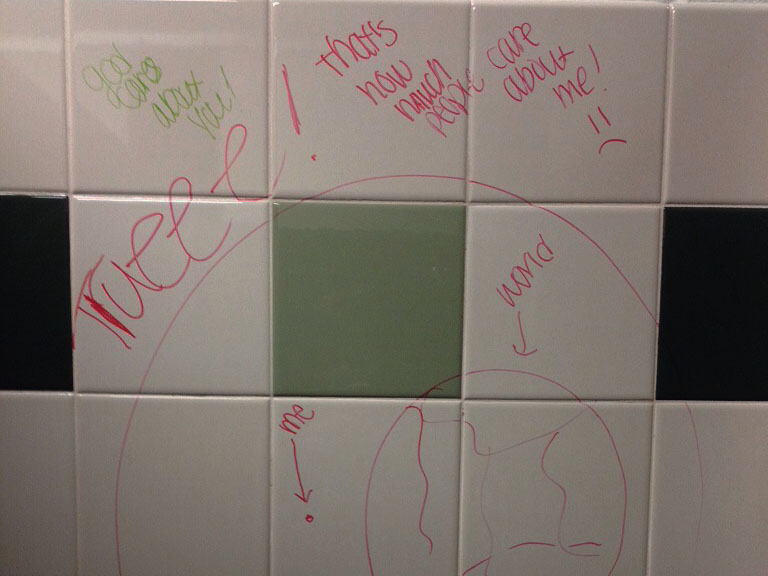Vandalism: You may think you’re an artist. . .
May 15, 2015
Graffiti and vandalism were recorded in ancient times and it continues today in public spaces, even in our almost new school.
Vandalism comes in many forms: writing tedious side notes in a book, drawing pencil figures on a desk, or spray painting graffiti art on the side of building. You may think it’s artistic, but this is not the proper way to express yourself.
Vandalism is the intentional damage of property.
Recently, the Linganore bathrooms were vandalized by an anonymous person who wrote over every wall, in every stall, and even on the mirrors, saying things like motivational quotes, as well as “you are bae,” and “be happy.” Even though these messages aren’t necessarily offensive, they are still vandalism, which can result in major consequences.
“The vandalism here at LHS usually tells an ongoing story. I just recently cleaned up a vandalized bathroom which told a story about God and self respect. It went on for a few days, in different bathrooms throughout the school,” said Shanita Lyles, custodian.
Vandalism occurs frequently in the school bathrooms and in textbooks, but how can this be monitored? There are security cameras placed all around the school, but none in the restrooms.
“We see a lot of vandalism in the bathroom, and it’s very hard to point the blame to one specific student,” said assistant principal Mr. Jan Witt.
Vandalism is reported about once every 2 or 3 weeks, but consequences and action are only put into place if it involves a name, or if a specific student that is reported and it can be proven that he or she was the perpetrator.
“If the vandalism is something very serious or threatening to another student, first we take pictures of it and then clean it up. We can’t leave it there for long at risk of what other students will do if they come across it,” said assistant principal Jan Witt in charge of the facility.
Vandalism happens year round, but around graduation season brings about more damage and problems.
“During graduation there’s usually paint on the parking lots and toilet paper unraveled outside,” said Mr. Jan Witt.
In five different schools that Mr. Jan Witt has been in, including South Carroll and Frederick, there is much more vandalism.
Some say vandalism has taken the form of self expression. Students use the walls and property of schools to create art and stories, but what they don’t think about is how it’s not the correct way to express themselves. Students do not realize that by drawing on public property is not only leaving a mark, but it’s hurting the school. Custodians could be spending their time cleaning and repairing things that couldn’t have been prevented rather than things that could have. Drawing in books and on desks not only makes the school look less than it is, but it’s destruction and can cost money that could be used in better ways.
The National Association of Secondary School Principals reports that increased stress levels can further “lead to more vandalism as students look for an outlet to express their frustration.”
Some of the motivations to vandalize stem from issues like peer pressure, binge drinking, and hostility towards a particular person.
If you don’t write in the book, you’re saving your school money that can be spent more wisely on school events and important student resources.
Vandalism hurts people and can be prevented, so what’s the point?






